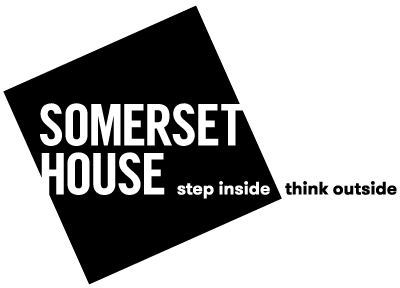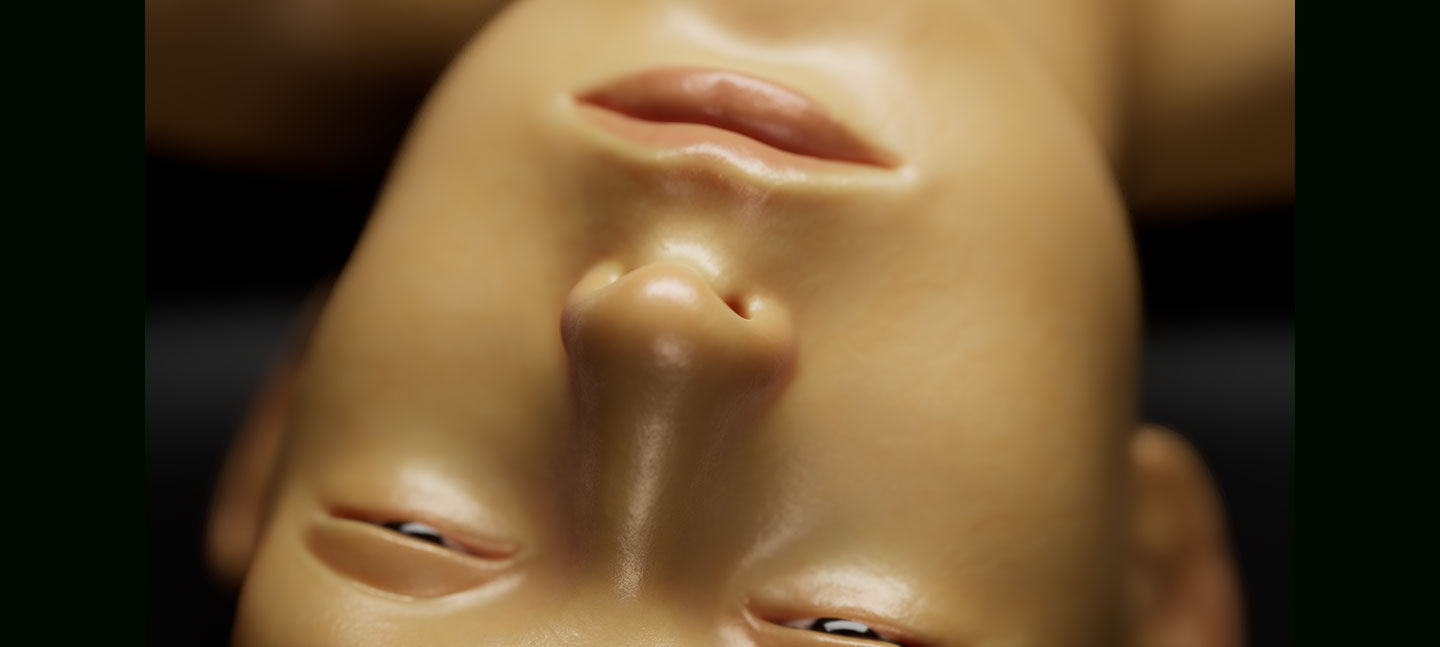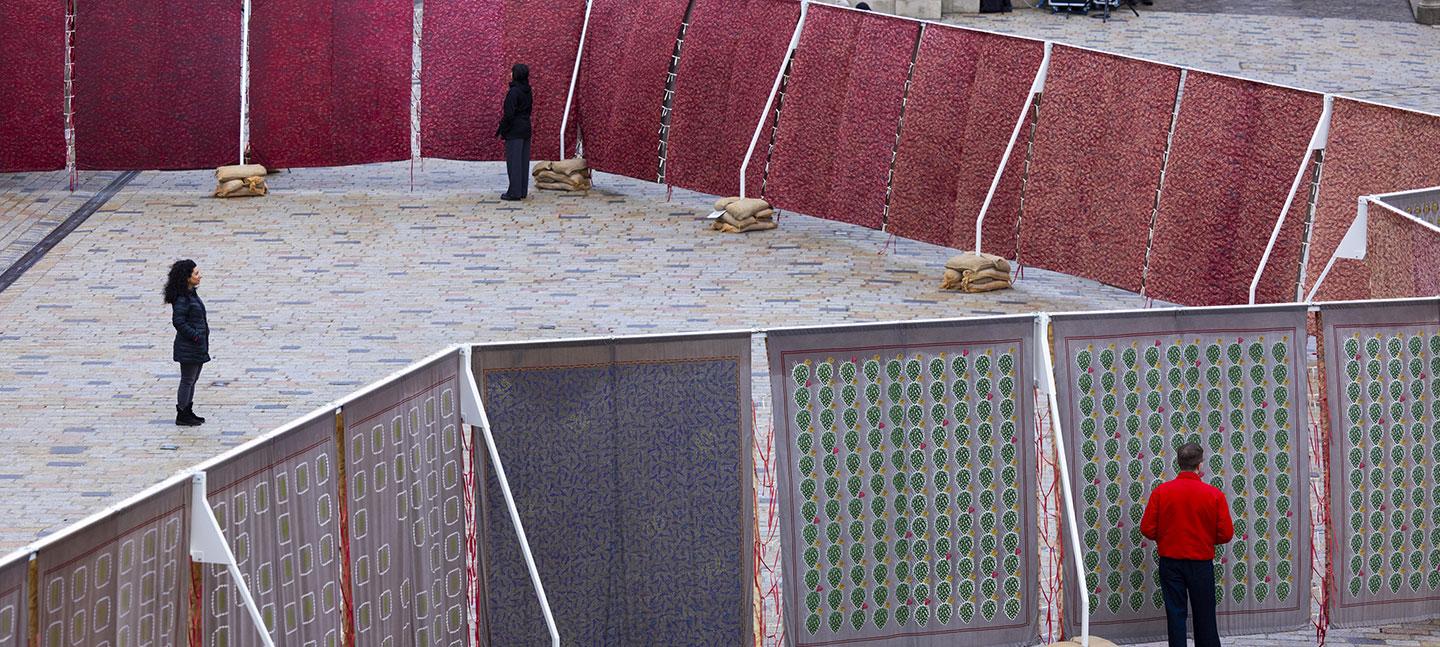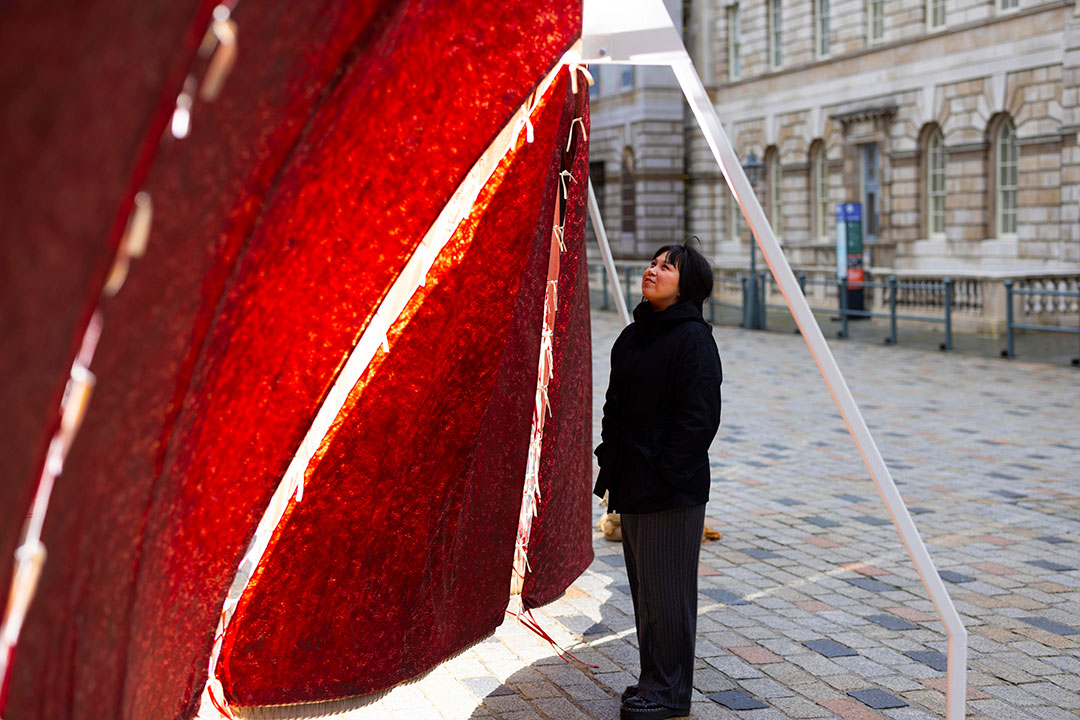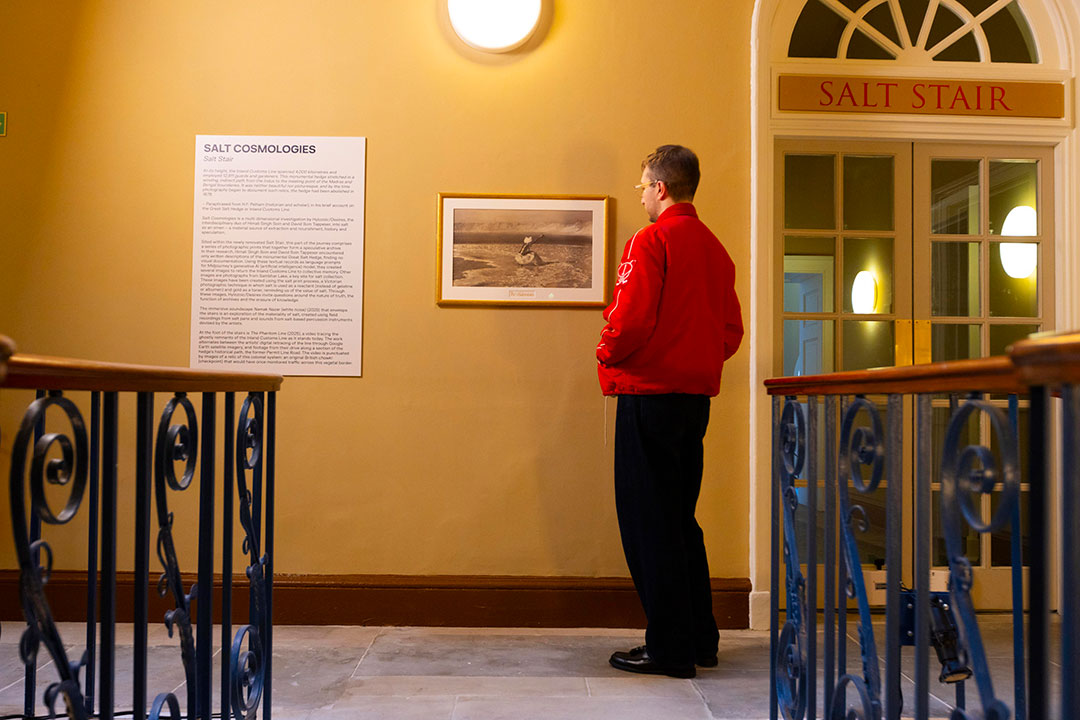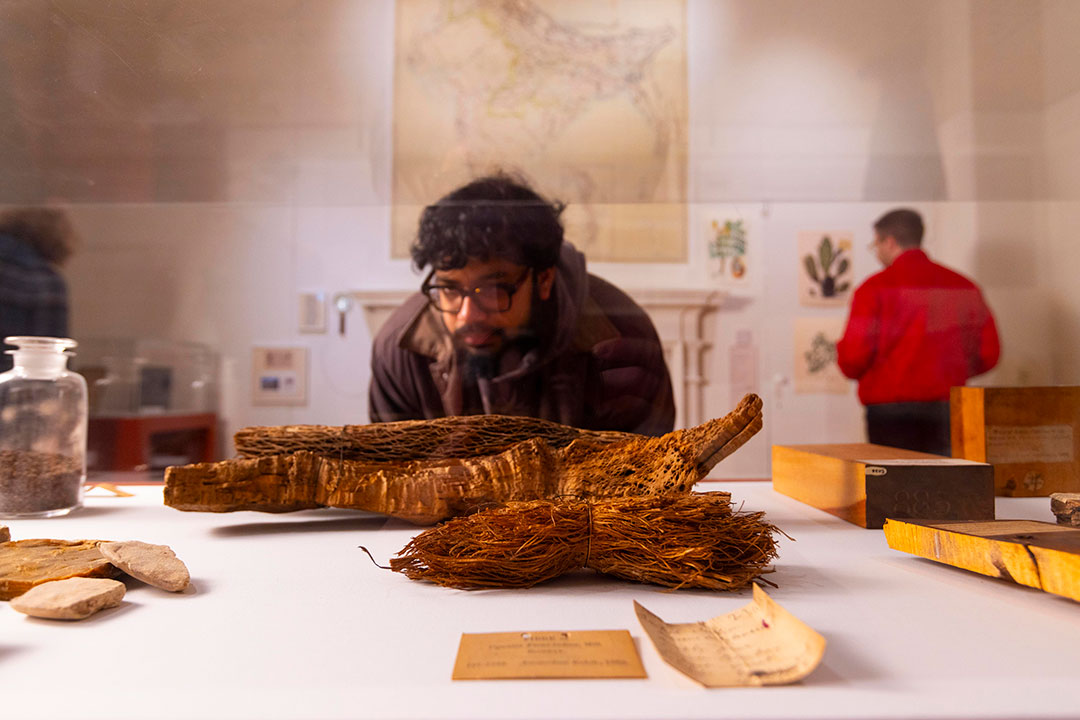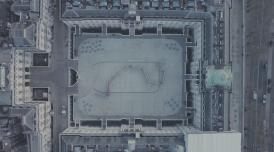Courtyard Installation: namak halal/namak haram
At the heart of the Edmond J. Safra Fountain Court, a fabric installation scaling 80 metres in length and 2 and a half meters in height replicates the Inland Customs Line, a monumental 2500 mile-long ‘hedge’ composed of living vegetation created by the British to enforce salt taxation during colonial rule. This reinterpretation features organic cotton printed with botanical dyes from the hedge's original plants, juxtaposing colonial botanical order with chaotic stamps and termite motifs. The title of the installation ‘namak halal’ (in accordance with salt, a term used to describe a loyalist of the British Empire) and ‘namak haram’ (against the salt, a traitor of the Empire) equally highlights the hedge's dual nature as both an instrument of colonial extraction and a site of resistance to colonial occupation, as ideas of liberation were smuggled through and over the British-built barrier.
Salt Stair & Terrace Rooms Exhibition
The newly restored Salt Stairs displays speculative salt-printed imagery of the hedge, created by Hylozoic/Desires using AI and Victorian printing techniques, alongside photography of Sambhar Lake, a British salt outpost. Presented alongside the prints is ‘Namak Nazar (white noise)’, an immersive soundscape, created by using salt itself as an instrument. Continuing down the stairs, visitors have the chance to view The Phantom Line, a video work that documents the artists in their journey of tracing the ghostly remnants of the Inland Customs Line today.
The Terrace Rooms showcases archival materials, including colonial-era salt receipts, Gandhi’s iconic 1930 salt march, and botanical specimens from Kew Gardens, highlighting the ecological and human cost of colonial extraction.
